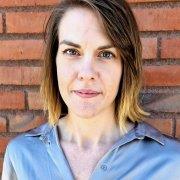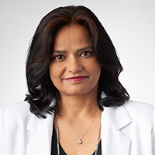We’ll see you in Berlin, Germany for the European Society of Human Genetics annual conference! ESHG is the major scientific and professional event in human genetics which brings together European and international geneticists. Bionano attends as we are committed to elevating human health by advancing genomic research.
Learn
Corporate Satellite Session
Learn
Please join us for our corporate satellite talk where experts will highlight the progress in understanding constitutional disorders, particularly in rare disease discovery using optical genome mapping (OGM). Don’t miss an introduction to Bionano’s latest system, Stratys™, and other important product releases that are elevating the entire sample to answer workflow for OGM.
Sponsored Session
Insights into Constitutional Disorders and Beyond: Scaling to New Heights with Optical Genome Mapping
-
Monday, June 3
-
14.00–15.30 (CEST)
-
Room New York 3 (level 1)
Alka Chaubey, Bionano’s Chief Medical Officer, will lead the discussion on Bionano’s latest system, Stratys™, and other important product releases that are elevating the entire sample to answer workflow for OGM.
Laura BatlleMasó, PhD | Vall d’Hebron Institute of Research (Spain)
“Solving the Unsolvable: OGM Application to Hereditary Angioedema”
- During this talk, Dr. BatlleMasó will overview OGM’s application in helping to resolve Hereditary Angioedema (HAE) cases by identifying disease-causing CNVs, marking a breakthrough in genetic insight for HAE-C1INH cases previously detected by traditional cytogenomic methods.
Bart van der Sanden, PhD | Radboud UMC (Netherlands)
“Optical Genome Mapping Identifies Hidden Structural Variants in 58 Unresolved Rare Disease”
- Dr. Van der Sanden will present the utility of OGM in unveiling hidden structural variants in sample trios, showcasing a significant increase in detecting disease-associated genes.
Marlene Ek, PhD student | Karolinska Institute (Sweden)
“Optical Genome Mapping Expands Multiple Myeloma Genomic Profiling”
- This talk will go over how OGM has been applied to unveil more insights on the cytogenomic profiles of multiple myeloma samples as compared to classical methods, and potential implications.

Laura Batlle Masó, PhD
Vall d’Hebron Institute of Research (Spain)

Bart van der Sanden, PhD
Radboud UMC (Netherlands)

Marlene Ek, PhD student
Karolinska Institute (Sweden)

Alka Chaubey, PhD, FACMG
Bionano (USA)
Connect
If you’re curious about OGM and wondering how it connects to your work, stop by and talk to one of our dedicated team members. We can’t wait to share our enthusiasm for technology that is moving research forward in remarkable ways.
Booth #338
Book a meeting with our OGM specialists in our hospitality room to ask questions on how your current workflow can be elevated with Bionano’s end-to-end OGM solutions, while enjoying coffee and tea.
Don’t forget to visit booth #338 for multiple new product updates with an OGM system, Stratys™, and new version release with our VIA 7.1 analysis software.
Don’t miss the latest research at the Poster Sessions!
Poster SessionsPoster Group A: Sunday, June 2, 13:00-14:00 hours CEST
Poster Group B: Sunday, June 2, 15:45-16:45 hours CEST
Poster Group C: Monday, June 3, 13:00-14:00 hours CEST
Poster Group D: Monday, June 3, 15:45-16:45 hours CEST
| POSTER | TITLE | LEAD AUTHOR |
|---|---|---|
| P01.065.A | A Canadian Lab’s Experience Using Optical Genome Mapping To Clinically Genotype Hematological Neoplasms | Zeid Hamadeh (Vancouver, Canada) |
| P14.015.A | Deciphering a Complex Short Size RERE Rearrangement: Importance of Combined Approaches for Duplication Interpretation | Jade Fauqueux (Lille, France) |
| P16.077.A | Accurate identification of pathogenic structural variants guided by multi-platform comparison | M-Hossein Moeinzadeh (Berlin, Germany) |
| P03.025.A | Characterization of a complex rearrangement between three chromosomes in a fetus with skeletal anomalies by optical genome mapping | Uwe Heinrich (Martinsried, Germany) |
| P12.023.B | SORD and SORD2P inversion: long read sequencing identifies a novel genetic mechanism underlying inherited neuropathy | Arianna Manini (Milan, Italy) |
| P01.163.B | Deciphering the molecular complexity of the IKZF1plus profile using Optical Genome Mapping | Jonathan Lühmann (Hannover, Germany) |
| P04.029.B | Optical Genome Mapping facilitates rapid characterization of structural variants in families with developmental eye anomalies | Solomon Merepa (Oxford, United Kingdom) |
| P01.007.C | Large genomic rearrangement: tandem duplication and triplication in BRCA1 gene causative for hereditary breast and ovarian cancer | Bernardus Aldrige Allister (Hannover, Germany) |
| P01.051.C | Enhanced cytogenomic analysis of complex karyotype in myelodysplastic syndrome using optical genome mapping | Andriana Valkama (Oulu, Finland) |
| P12.032.C | The WWOX gene variants detection in patient with cerebellar ataxia using optical genome mapping | Karolina Rutkowska (Warsaw, Poland) |
| P14.025.C | Positive Predictive Value of Balanced Structural Variants reported through Short-Read Genome Sequencing: do we need orthogonal confirmation? | Nicolas Chatron (Lyon, France) |
| P14.013.C | Optical genome mapping identifies hidden structural variants in 58 undiagnosed rare disease patient-parent trios | Alexander Hoischen (Nijmegen, Netherlands) |
| P15.102.C | Establishing ultra-rapid genome sequencing in neonatal and pediatric intensive care units in Germany – project Baby Lion | Bernd Auber (Hannover, Germany) |
| P01.160.C | Deciphering copy number variations within the complex genomic region of the PMS2 gene using Optical Genome Mapping | Jasmin Maier (Martinsried, Germany) |
| P14.029.C | Optical genome mapping of a patient with ring chromosome 3 shows the importance of choosing the proper reference genome for the analysis | Bruna Burssed (São Paulo, Brazil) |
| P01.056.D | Exome sequencing identified rare recurrent copy number variants and hereditary breast cancer susceptibility | Tuomo Mantere (Oulu, Finland) |
| P04.011.D | A combined approach of innovative DNA- and RNA-technologies reveals hidden LINE-1/ERV insertion in IQCB1 as causative variant for Senior Løken syndrome | Suzanne E. de Bruijn (Nijmegen, Netherlands) |
| P10.021.D | Optical genome mapping finally unveils the genetic cause of aniridia and intellectual disability in a 17-year-old after seven years of diagnostic odyssey | Wilena Telman (Martinsried, Germany) |
| P15.079.D | Benefits of the analysis of a complex chromosomal rearrangement in the implementation of long read approaches | Pascal Chambon (Rouen, France) |
| P15.091.D | A multimodal approach to molecular diagnosis in NF1 highlights the need for bespoke analysis in undiagnosed patients | Ellie McAleese-Park (Newcastle-upon-Tyne, United Kingdom) |
| P21.065.D | Advancing Genetic Diagnostics: Optical Genome Mapping’s Efficacy in Identifying Structural Variants for Autosomal Recessive Diseases | Ozge Beyza Ogutlu (Erzurum, Turkey) |
| E-Poster | Optical Genome Mapping for comprehensive genomic rearrangement analysis | Julia Flunkert (Berlin, Germany) |
| E-Poster | Optical genome mapping: lighting the way in complex clinical cases | Iván Monge Lobo (Madrid, Spain) |
| E-Poster | Refining genotype-phenotype correlation in complex chromosomal rearrangements using optical genome mapping – case report | Vladimira Vallova (Brno, Czech Republic) |
| E-Poster | Unraveling the mysteries of balanced rearrangements: optical genome mapping spotlights BCL11B misregulation in a familial translocation | Adrián Alcalá San Martín (Barcelona, Spain) |
| E-Poster | Optical genome mapping (OGM) allows the characterization of a complex chromosome rearrangement associated with recurrent pregnancy loss | Detlef Trost (Paris, France) |
| E-Poster | Focus on deletions and duplications identified by Optical Genome Mapping technique in a cohort of 100 patients: comparison with MCA | Martine Doco-Fenzy (Nantes, France) |
| Presentation, June 1, 19:00-19:15, Room A8 | Optical genome mapping identifies hidden structural variants in previously undiagnosed rare disease cases in Solve-RD | Bart van der Sanden (Nijmegen, Netherlands) |
| Presentation, June 1, 19:45-20:00, Room A8 | Multiomics and deep phenotyping in MECP2 Duplication Syndrome: Insight into disease severity, expression variability, and nucleic acid therapeutics | Davut Pehlivan (Houston, United States) |
| Presentation, June 3, 08:30-10:00, Room A2 | Next generation cytogenetics by optical genome mapping | Rashmi Kanagal-Shamanna (Houston, United States) |
